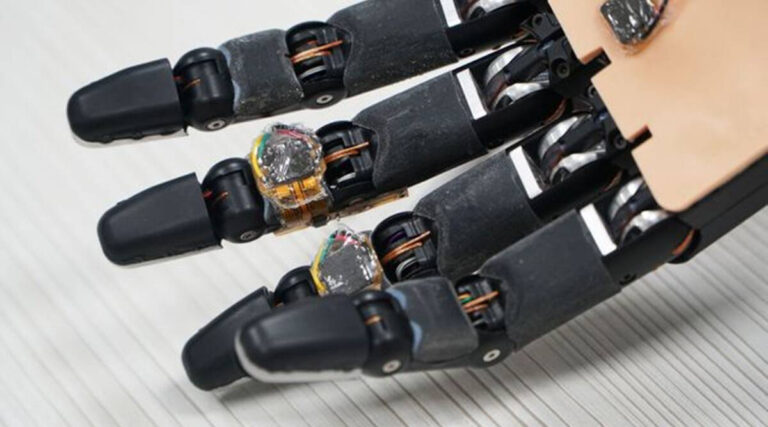Skin-like smart foam that allows robots to ‘feel’ objects can also self repair

Researchers at the National University of Singapore (NUS) have developed a smart foam material that not only allows robots to sense nearby objects, but that also repairs itself when damaged, just like human skin. ‘Artificially innervated foam’, or AiFoam, “is a highly elastic polymer created by mixing fluoropolymer with a compound that lowers surface tension,” writes Reuters.
Professor Benjamin Tee and his team from the National University of Singapore developed AiFoam (artificially innervated foam), which is a #smart material that can give #robots human-like #tactile #sensing.
— Mecharithm (@mecharithm) May 19, 2021
Video credit: National University of Singapore#robotics pic.twitter.com/it7jezRP6f
This, in turn, allows the spongy material to fuse easily into one piece when cut, according to the researchers. “There are many applications for such a material, especially in robotics and prosthetic devices, where robots need to be a lot more intelligent when working around humans,” explained lead researcher Benjamin Tee.
In order to replicate the human sense of touch, the researchers infused the material with microscopic metal particles and added tiny electrodes underneath the surface of the foam. When pressure is applied, the metal particles draw closer within the polymer matrix, changing their electrical properties. These changes can be detected by the electrodes connected to a computer, which then tells the robot what to do.
By enabling the robotic hand to detect not only the amount but also the direction of applied force, this feature could potentially make robots more intelligent and interactive. Tee said AiFoam is the first of its kind to combine both self-healing properties and proximity and pressure sensing. After spending over two years developing it, he and his team hope the material can be put to practical use within five years. “It can also allow prosthetic users to have more intuitive use of their robotic arms when grabbing objects,” he told Reuters.
AiFoam also allows robots to perceive nearby objects without even touching them. According to the researchers, it is capable of detecting the presence of human fingers from centimetres away. Oh, and the foam can stretch up to 230 per cent without breaking. First, we made it possible for robots to feel pain, then we realised that they can feel empathy, and now we’ve allowed them to self-repair? Should we be worried?





